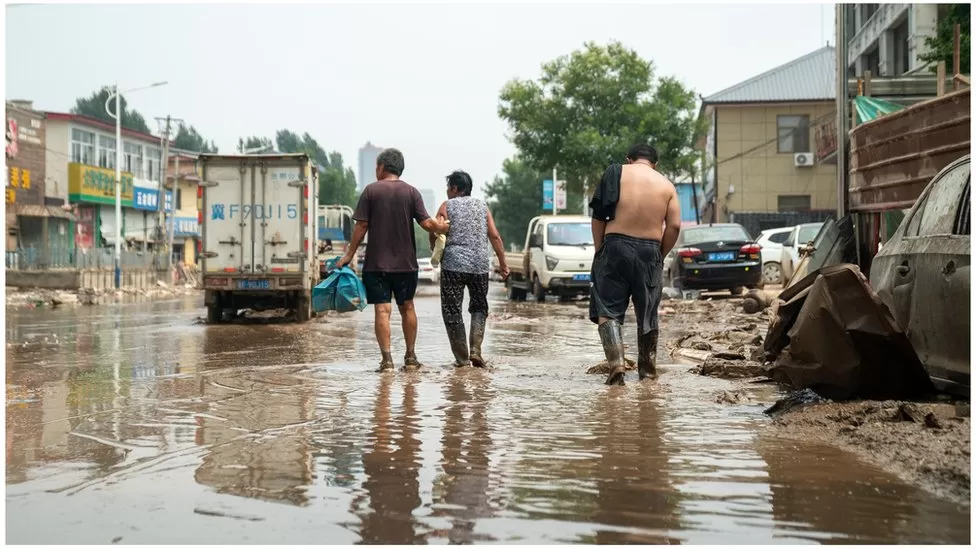China’s summer of climate destruction

China’s summer this year has seen both extreme heat and devastating floods.
And the flooding this time around has struck areas where such weather has been unheard of, with scientists – blaming climate change – warning that the worst is yet to come.
Zhang Junhua, 38, stands next to a vast patch of rice, now completely useless, and says, “I have never seen a flood here in my life.” He adds, “We just weren’t prepared.”
As a result of plenty of warning, he says, his family and friends are safe, but now everyone in his village will have to endure some tough months.
Additionally, the devastation in Heilongjiang Province in north-east China has had a major impact on food supplies throughout the country. Water volume and speed have flattened 40% of the area’s famed Wuchang rice crop this month. Today, places that should be lush and green are brown and dead.
The fields where we planted our crops have all been submerged. We cannot plant again this year,” says another farmer, Zhao Lijuan, as she smiles and tries to be philosophical about the situation.
I am terrified that the typhoons will return because we have tens of thousands of acres of rice fields here,” the 56-year-old says.
The recent floods have killed at least 81 people, including some who attempted to rescue others.
In a country already struggling to recover following three years of strict Coronavirus control measures, the economic pain has been much broader.
If the government wants to measure the immediate cost of not addressing climate change urgently, it only needs to look at its own statistics.
In the past decade, floods have increased tenfold in the country. China has developed better systems to monitor and record flood data, which explains a portion of the increase in flood numbers, according to Dr Zhao Li from Greenpeace East Asia.
Global warming remains a major contributor, however.
She says warmer temperatures can increase evaporation rates, resulting in more moisture in the atmosphere. It is likely that the increased moisture content will lead to more intense rainfall and more frequent and severe storms, including hurricanes and cyclones.”
According to a Greenpeace study from two years ago, the provinces around Beijing and Shanghai would experience more heatwaves and extreme rainfall during this century. It would take more than 40 days in the Pearl River delta.
Since the mid-1990s, the Chinese government’s Meteorological Administration has reported an increase in extreme high temperatures and precipitation.
In the face of potential catastrophes, Dr Zhao Li from Greenpeace warns that humans are not prepared.
The recent floods demonstrate that we are not prepared for extreme weather events.
“Upgrading all infrastructure to be able to deal with a flood that is the worst in hundreds of years is a huge and perhaps unrealistic task.” As a result of climate change, once-in-a-century events are coming back into rotation with greater frequency, which means we will soon have to deal with a disaster again.”
In order to ease the impact of recent floods, officials in China used a system of dams to redirect waterways.
In the summer of 2011, there were six to eight monthly floods listed in China. Last year, more than 130 were recorded in July and 82 in August.
